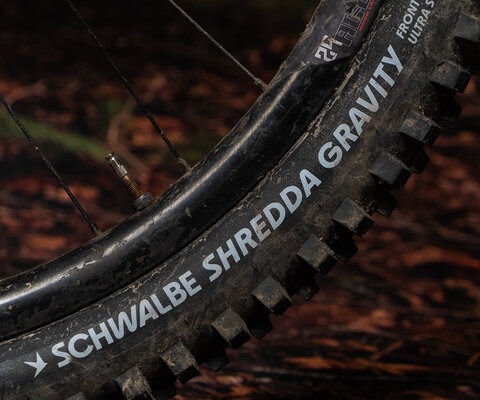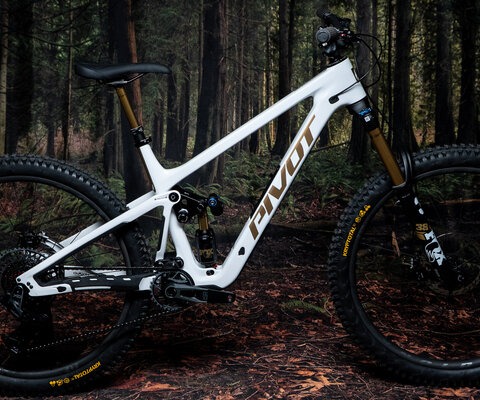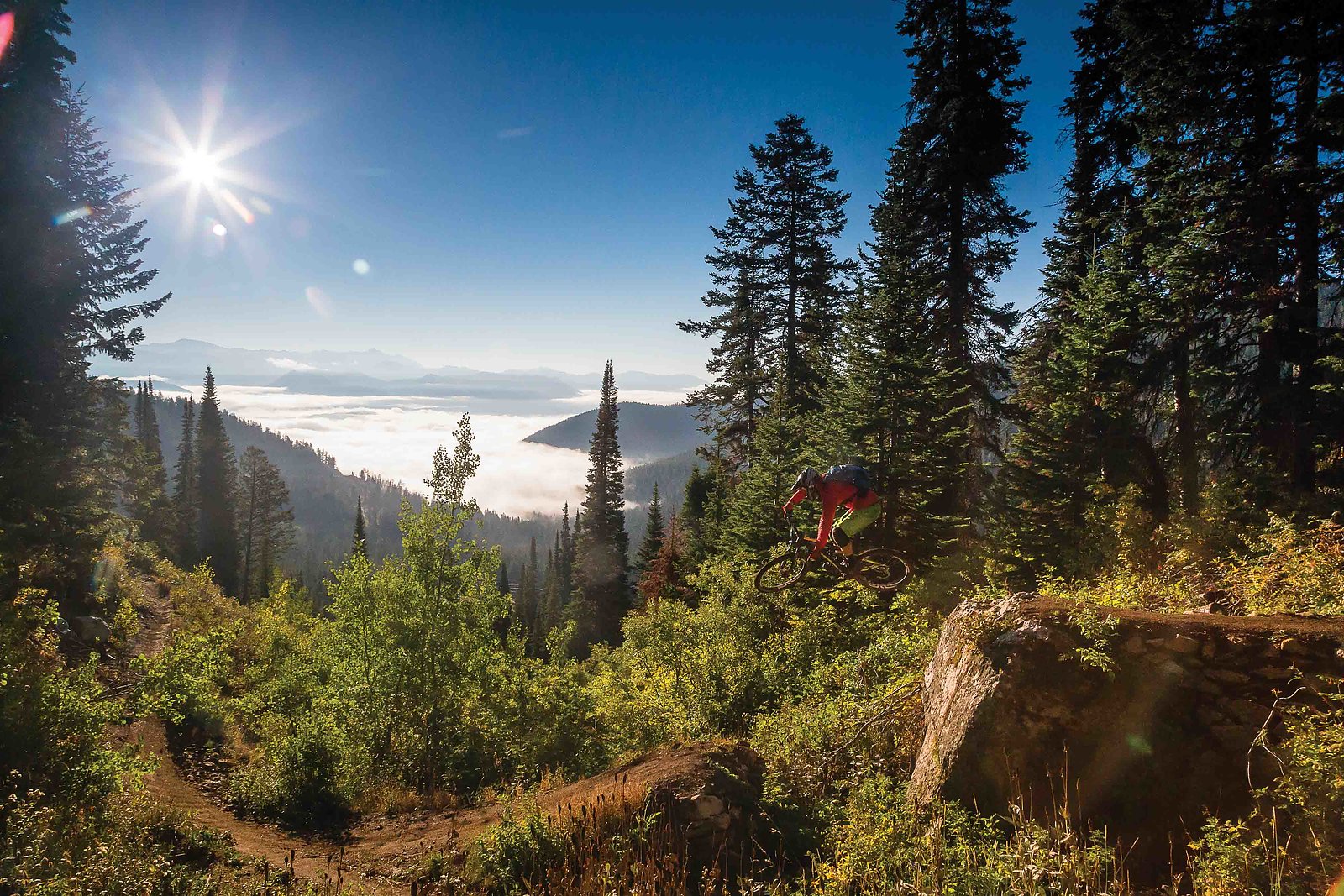
Something to Lose Teton Pass, Wyoming's Army of Ambassadors
Words by Brigid Mander | Photos by Jay Goodrich
The entrance was just there, somewhere, in the forest of pine, aspen and thick deadfall left of the main trail.
It was definitely there. Though I looked, I couldn’t find it. That was the summer of 2006, and I rode past the rumored entrance almost daily, searching, but not too hard, secretly afraid to find it, because then I’d have to ride it.
The trail, dropping off the top of Teton Pass in western Wyoming and 2,500 feet nearly to the valley floor, had existed in some form for six or seven years. It was called Lithium, and in the early 2000s was reserved for a small, hushed group of locals with downhill rigs who labored illegally in the forest so they’d have somewhere to ride their new bikes. Those in the know took care to use different access points, to avoid wearing giveaway entry or exit paths.
By the time I was creaking by in 2006, Lithium was the only survivor of a trio of short-lived, illegal downhill trails in the Bridger-Teton National Forest [BTNF]. In late 2004, a first-ofits- kind deal saw bikers promise not to ride the other two ever again, Lithium had become a legal, United States Forest Service-sanctioned public bike trail. For a novice like me, it was already the absolute shining pinnacle of biking achievement. I waited another season before I followed some friends in, and exploded in short order, falling down its rocky tech sections. I thought it was fantastic. I came back again and again. I gave no thought as to how this marvel had come to be here in the woods.
More than a decade later, that hidden entrance can be found via helpful, informative signage: “Lithium, freeride bike trail, downhill only.” And so the former punk trail basks in fully legal status, proudly adhering to sanctioned USFS trail requirements, the headliner of the first official downhill- bike-specific trail network on public land in the United States. Yet like most seemingly magical creations, the path to this fancy greeting signpost was anything but.

Each summer, an endless line of tourists creep over Teton Pass’ 8,500- foot summit. Many stop at the top for
photos with an outdated sign claiming Jackson Hole as the “Last of the Old West,” while RVs lumber sluggishly
in both directions, clogging traffic and filling the air with the smell of burning brakes.
A two-lane byway, Wyoming Highway 22 is a steep, historic corridor connecting the former fur-trading outpost to the wide open agricultural plains of eastern Idaho. Most drive by oblivious to the hum of activity in the forested slopes flanking both sides of the pass, the trailheads, the horses, the runners. But it’s the shuttle cars filled with bikes that provide a clue to the pass’ newest activity—and recent boon to the local economy.
In recent summers, mountain bike use on Teton Pass’ gravity trails alone has doubled (or, on some, tripled) during the few snowless months. Between the pass and Jackson’s town trails, the area boasts 130 miles of trail, which—according to the last comprehensive study of economic impact in 2010—was found to have generated nearly $19 million for the local economy, a number that has only climbed with the explosive growth of mountain biking and widening fame of the area trails. And even though the pass overall sees approximately a quarter of a million annual user days, civility reigns among the disparate summer user groups.
This would have never happened, however, without a short-lived period of less-than-upstanding behavior.
“Kichan and I kept our distance because it was illegal, but we’re all family here. I knew what they were up to.”—Andy Olpin
In the summer of 2000, Andy and Kichan Olpin, co-owners of Wilson Backcountry Sports, a ski and bike shop at the base of the pass in tiny Wilson, WY, were doing their best to ignore their employees’ new hobby. At the time, the shop kids were ordering huge, squishy suspension bikes from Kona through the store—strange, considering none of the existing local trails had the steeps and jumps on which to use such bikes. “Kichan and I kept our distance because it was illegal,” Andy says. “But we’re all family here. I knew what they were up to.”
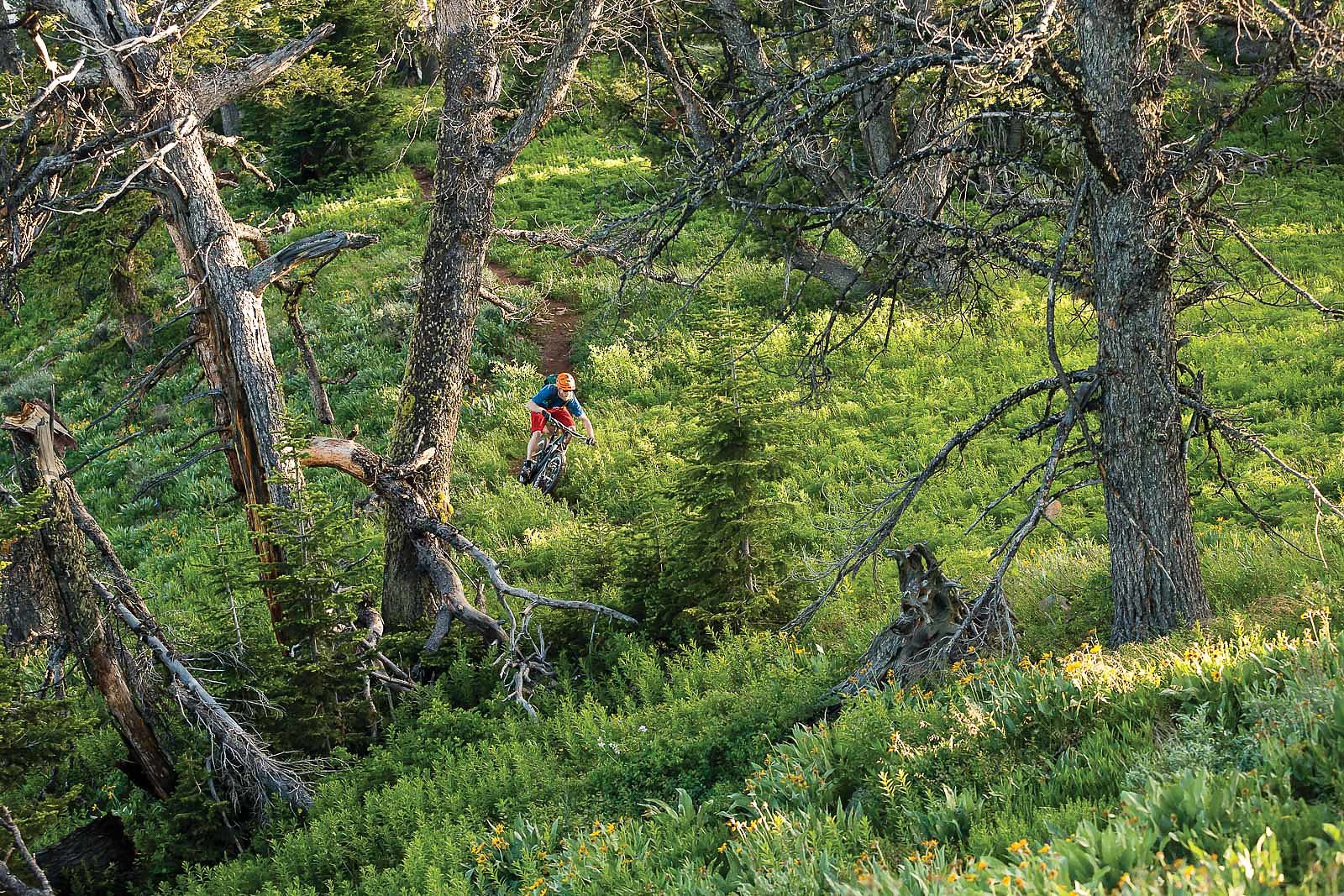
At that time, cross-country mountain biking was becoming more popular, and Friends of Pathways—a local trails nonprofit—had begun work on the pass. In cooperation with the USFS, they were helping renovate miles of century-old, user-created horse trails for shared use. But these were not where the shop guys and their friends were riding. They were creating their own trails project, and not in cooperation with the USFS or anyone else.
The terrain was perfect: a road to the top for easy shuttling, plus an existing trail system for access, and then miles of steep slopes and ridges dropping down to the valley. The shop kids knew that unsanctioned, intentional trail building in the National Forest is a federal crime, but it wasn’t a deterrent. “We didn’t care,” says Kevin Kavanaugh, a local rider and early downhiller. “We thought we wanted this [type of riding], we weren’t going to be allowed to have it, so there was a sense of ignorance.”
“We didn’t think we had anything to lose,” says Harlan Hottenstein, at the time working as a bike tech at Wilson Backcountry.
Jefferson Franklin had moved to Wyoming from Colorado that same summer to work as a chef, but it was the biking that cemented his decision to stay. “I was just like, ‘You can shuttle a road? To the top!? And just ride out!?’” he says. “We shuttled the legal trails, Black, Phillips, but began scratching out bits and pieces, and skidding in the new trails, which is what we’d always done where I grew up in California. I showed up looking around at the pass like, ‘I could make a trail there, and there, and there!’”
That, however, was not to be. The pass is a compact trail system, heavily used by equestrians, runners, berry pickers, dog walkers, hikers, cross-country bikers and big game wildlife. Even with a tight, secretive group, discovery was inevitable.
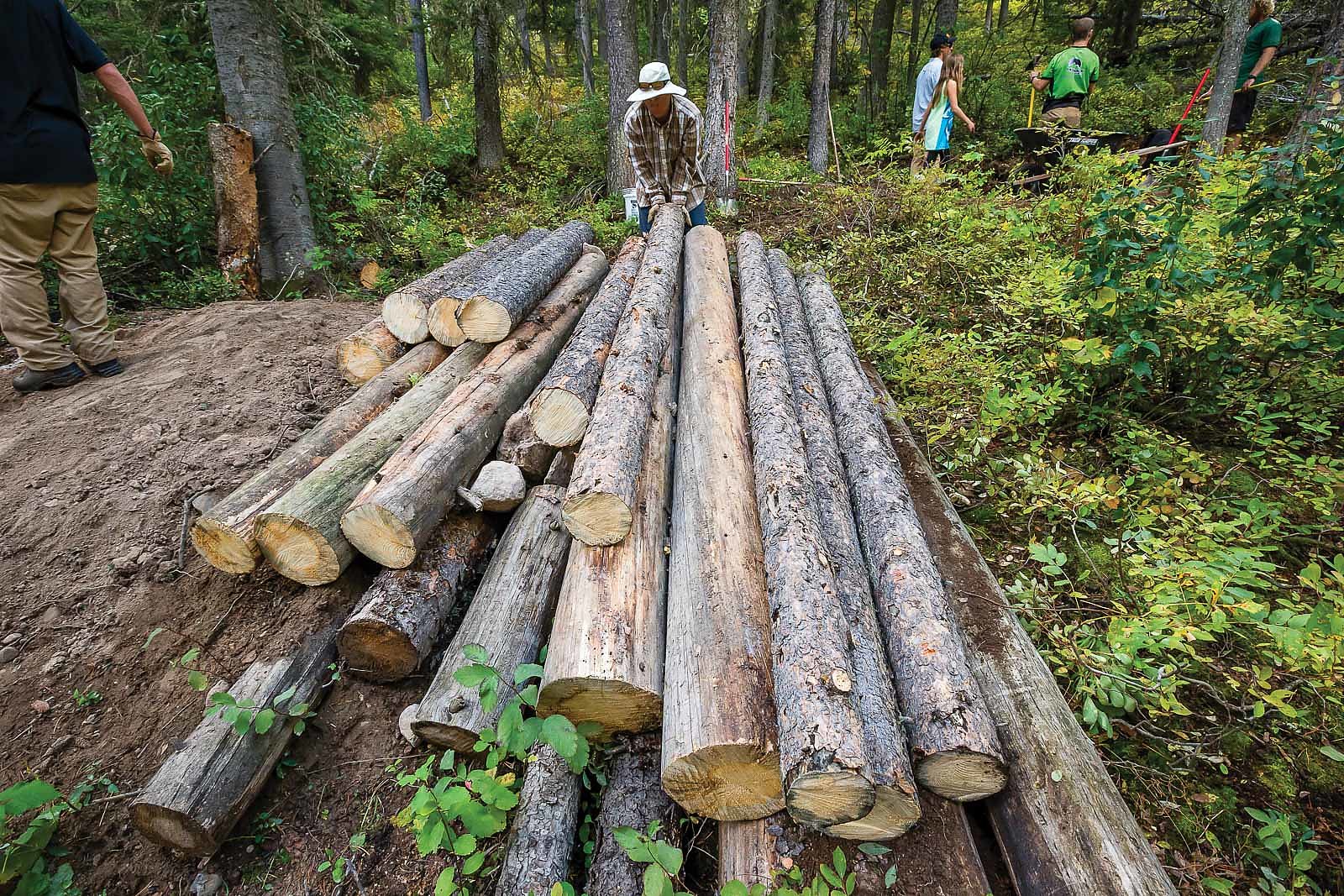
The BTNF, land manager of Teton Pass, had received reports of downhill bikers and “probable” illegal trail-building activity from other community users, but the official end came when an injured hiker called for help on what he believed was Black Canyon Trail a few years later. Teton County Search and Rescue conducted a fruitless search, after which the emergency crew came into Wilson Backcountry, looking for the downhillers. As Andy says, “I remember Teton County Search and Rescue volunteers came into the shop, and said, ‘You’ve got to tell us where these other trails are, so we can go get this guy.’”
The confused hiker, it turned out, had been trying to make his way up Lithium.
Instead of the feared immediate prosecution, the bikers were invited to meet with local USFS officials. The National Forest had recently hired a new recreation, wilderness and trails manager named Linda Merigliano, who believed land managers’ goal shouldn’t be to write a bunch of tickets, but to address sustainable, reasonable use of a shared public resource and important wildlife habitat. Merigliano, it turned out, found a very receptive audience in the Teton Pass trail community. She had the foresight to see the new downhill bike user group was not likely to go away—more likely, it would probably grow. But cooperative or not, the bikers were breaking the law, damaging the land, and displacing and endangering other users. Additionally, some of the trails were in a Congressionally designated Wilderness Study Area.
“What they did was wrong,” Merigliano says. “But we had some people in the community step up and express a willingness to work out the issues. From behind-the-scenes discussions with different user groups, it seemed we could find a different solution, instead of the cat-and-mouse law enforcement game.”
When Merigliano called the first public meeting on the issue in 2004, more than 100 people showed up. While folks like Hottenstein may laugh about it now, incompatibility with downhill bikes and their users was the driving force. “It was kind of like, ‘How can we keep the bikers away from everyone else?’” he says.
In the end, each group ceded some of the overall terrain in exchange for some use-specific terrain, resulting in Teton Pass trails being split into horse/hiker only, nonmotorized multi-use and one new type of trail. The public and the Forest Service had agreed the bikers needed separation, and with that the first officially designated downhill-only freeride bike trail system outside of a ski resort on public land came into being. All it required was for everyone to stick to the rules.
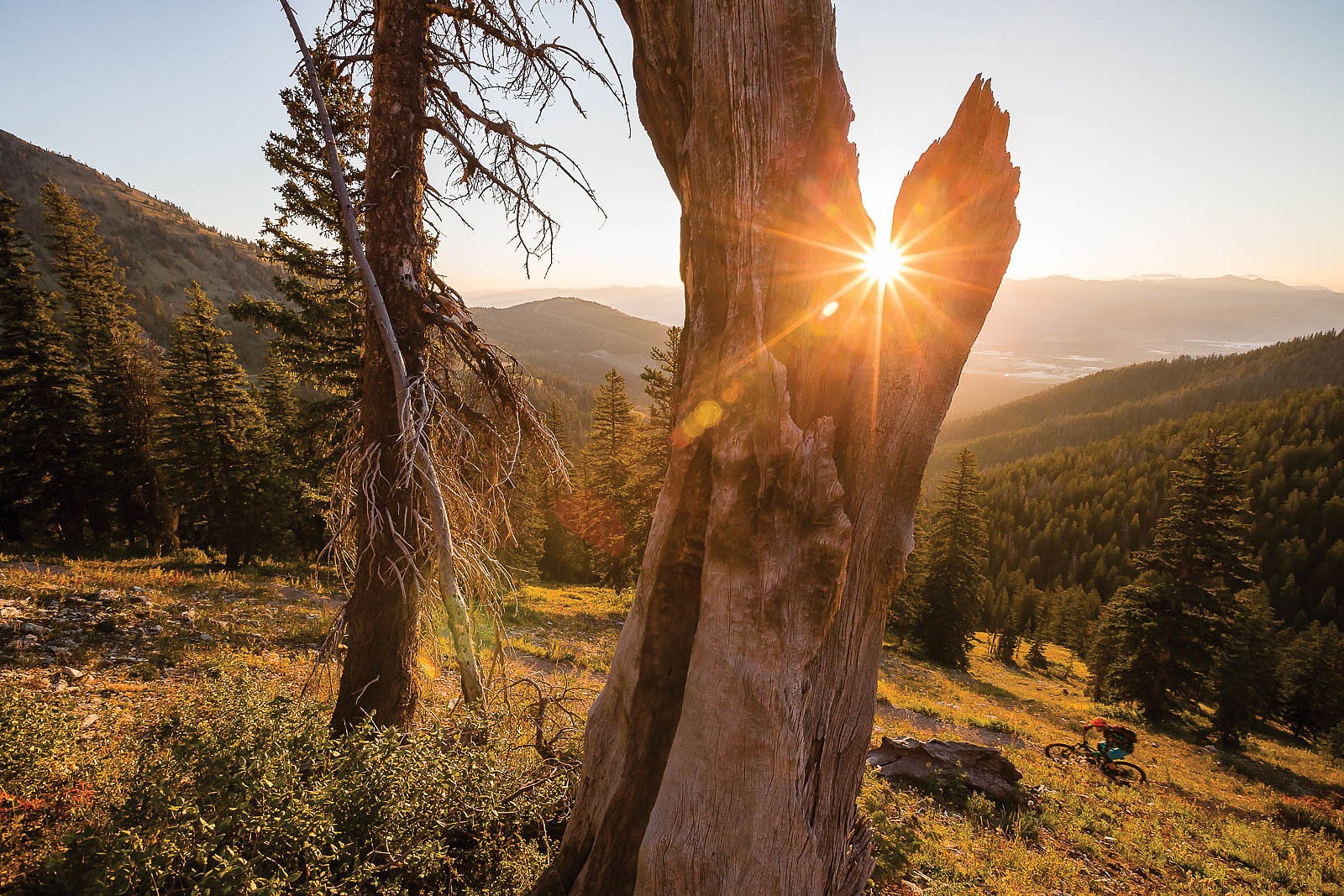
The bikers were not about to waste this golden opportunity. “We sat down with the Forest Service and were granted amnesty,” Kavanaugh says. “I mean, they were putting [illegal trail builders] in jail in California. We organized right away and formed a 501(c)(3) nonprofit.”
The former culprits became the Teton Freedom Riders, and they soon signed a legally binding Memorandum of Understanding (MOU) with the BTNF. In a stroke of genius, a triumph of reverse psychology and a leap of faith, the USFS placed the responsibility for care and funding squarely on the shoulders of the bikers. “It basically said, ‘You’re going to take care of this, these are our terms, and if they are broken, the trails are decommissioned,’” Hottenstein says.
Two of the three illegal trails were to be closed, but they were allowed to choose the one that would remain open. They kept Lithium. Suddenly, those shop kids did have something to lose.
As an officially recognized organization, the Freedom Riders had a platform not only to build new trails, but also to work alongside the BTNF and Friends of Pathways. The latter, a decidedly uncontroversial group formed 10 years before, in 1994, began helping with the Forest Service’s work on the pass just as the illegal trails were sprouting up. Rather than build animosity, the tumult from 2000-2004 created enthusiastic allies; Pathways was eager to see the Freedom Riders succeed, and schooled them in their initial organization, making both nonprofits more effective and more helpful to the BTNF.
“It’s a unique collaboration, especially with the way the Freedom Riders came on the scene,” says Chris Owen, trails manager for Pathways. “Without it, people would have kept using the pass, but it would have been a free for all, and not nearly as good as what we have now. Sometimes, you just have to step outside the bureaucracy, and find a better way.”
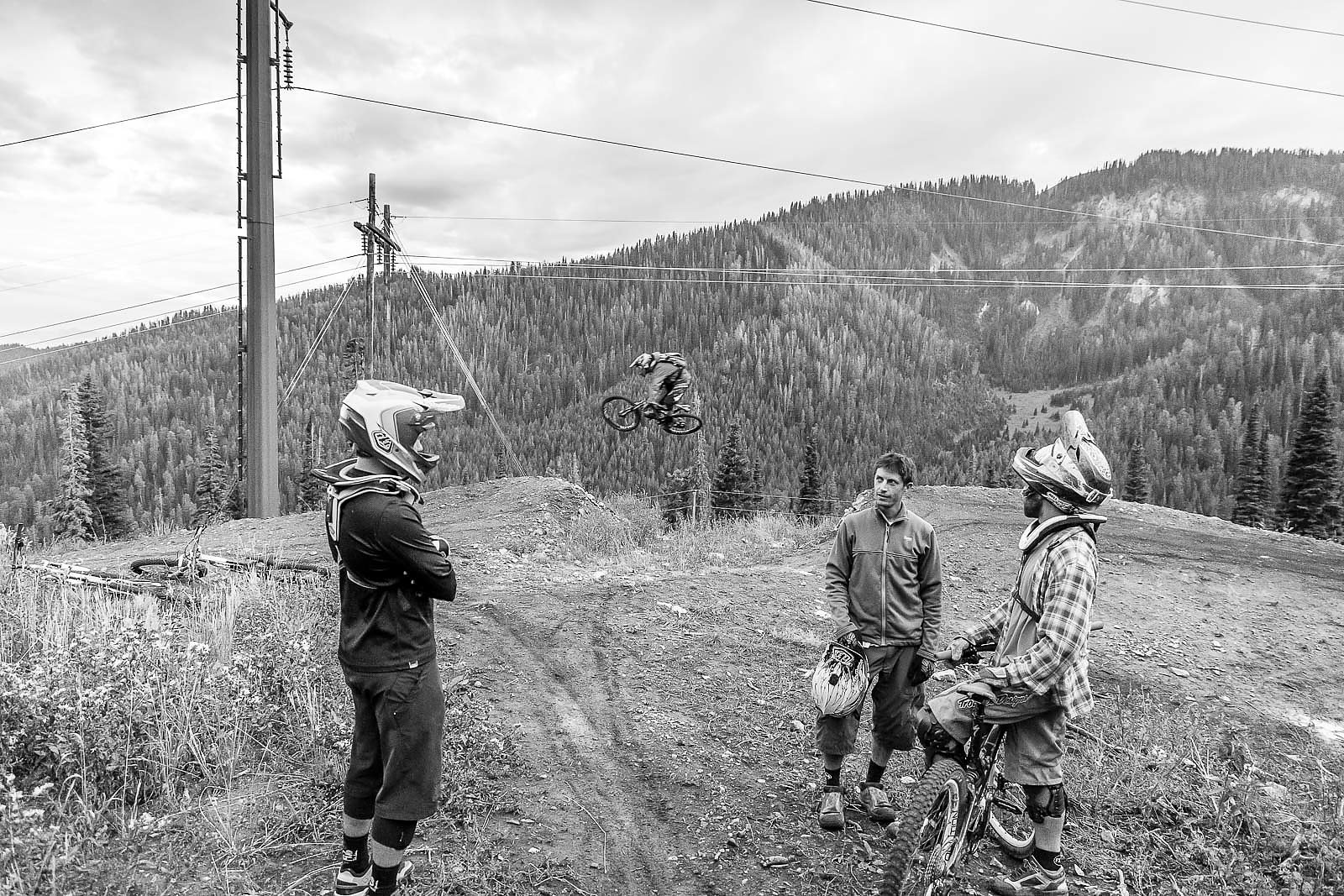
There is a lot of communication and mutual assistance over the entire bike trails system, but work on Teton Pass is now divided and looked after by two entities. Pathways handles multi-use trails while the Freedom Riders take care of the downhill-only bike trails with BTNF oversight. The two groups host fundraisers and events to raise awareness about the hard work and community outreach required to create trails. By doing so, they hope to improve the image of bike recreation as a respectable, respectful user group in the Tetons, as well as educate bikers on how to be positive representatives of their community.
As a result, the culture of respect and order toward fellow users, public land privilege and wildlife has grown more solid, not less, in the face of increased use. It’s not always easy. Entitlement on the trails, especially with an increase of out of- town riders or hikers, can be a problem, but trail builders depend on local users to seize ownership and act as ambassadors and educate those unfamiliar with the local land etiquette. “Our core group is super supportive,” Jefferson says. “That trickles down, and you want the vibe to be nice, and to be friendly.”
For mountain bikers—whether freeride or cross country—that is an important presentation, because bikes can put foot traffic on the defensive. “We want to have fun, and help other people have fun,” says Anne Marie Curly, a founding member of Freedom Riders who serves as treasurer on the board. “We really want to foster that culture on the pass. Luckily, we have a pretty solid presence up there.”
Some of the more helpful organizational ingredients are tangible, however, including the majority separation of incompatible user groups like horses and bikes. One of the outcomes from the original community meetings in 2004 was all user groups agreeing that two power-line corridors near the highway, as already disturbed areas, would be a good place to allow and mostly confine new downhill trails.
As people began coming to the region for the volunteer-built trails, and local tourism organizations began using them to advertise, business-savvy Kavanaugh launched the Jackson Hole Trails Consortium. The Consortium aims to educate local businesses on this community- funded public land amenity and provide an easy avenue to donate money to the trails. Along with many private donations, the Consortium funds help improve the pass in numerous ways, like an impressive, system-wide signage effort. Like the one above Lithium, each sign includes trail names, mileages, allowed uses, dog etiquette, reminders about respecting wildlife, and, of course, encouragement to “say hi” to fellow trail users.

Joint efforts between Freedom Riders, Pathways and the Forest Service have also created new multi-use trails to help accommodate the growing number of cross-country bikers who want more than just downhill-specific trails. Interestingly enough, Teton Pass now sees almost no illegal trail work, and what little happens is usually due to lack of education. Others are quick to fill in knowledge gaps for any wayward builders, and to inform Hottenstein, who now serves on the Freedom Riders board as field director and has become a highly respected, full-time regional trail builder himself. Any nonsanctioned work is promptly destroyed, as the potential of jeopardizing the terms of the MOU—and thus the current freeride trails— has created an army of ambassadors.
The accomplishments on the pass have not gone unnoticed outside of Wyoming, either. “Other Forests have called to ask about how we did this,” Merigilano says. “It’s got to be a two-way street. The bikers have to be willing to comply with the rules, and the Forest has to be willing to give them a chance.”
Similarly, other bike groups and municipalities contact Pathways and Freedom Riders, asking for advice on how to work with land managers. Their answer is, in a large part, simply to use trust and communication. But it also comes down to the people in authority who’ve made the rules and decisions on how to manage these trails.
“Teton Freedom Riders and Friends of Pathways have helped create a really sustainable, good trail system,” Merigliano says. “They’ve fostered respect for other users and respect for the land. There’s a big respect for wildlife. You might have to turn around if [moose, elk, bears, to name a few] are on the trail, give them space. They don’t have anywhere else to go.
“It can’t just be the land managers. It has to be the community, saying, ‘This is the way we behave.’ It’s a trail community, not different user groups.” —Linda Merigliano
“It can’t just be the land managers. It has to be the community, saying, ‘This is the way we behave.’ It’s a trail community, not different user groups.”
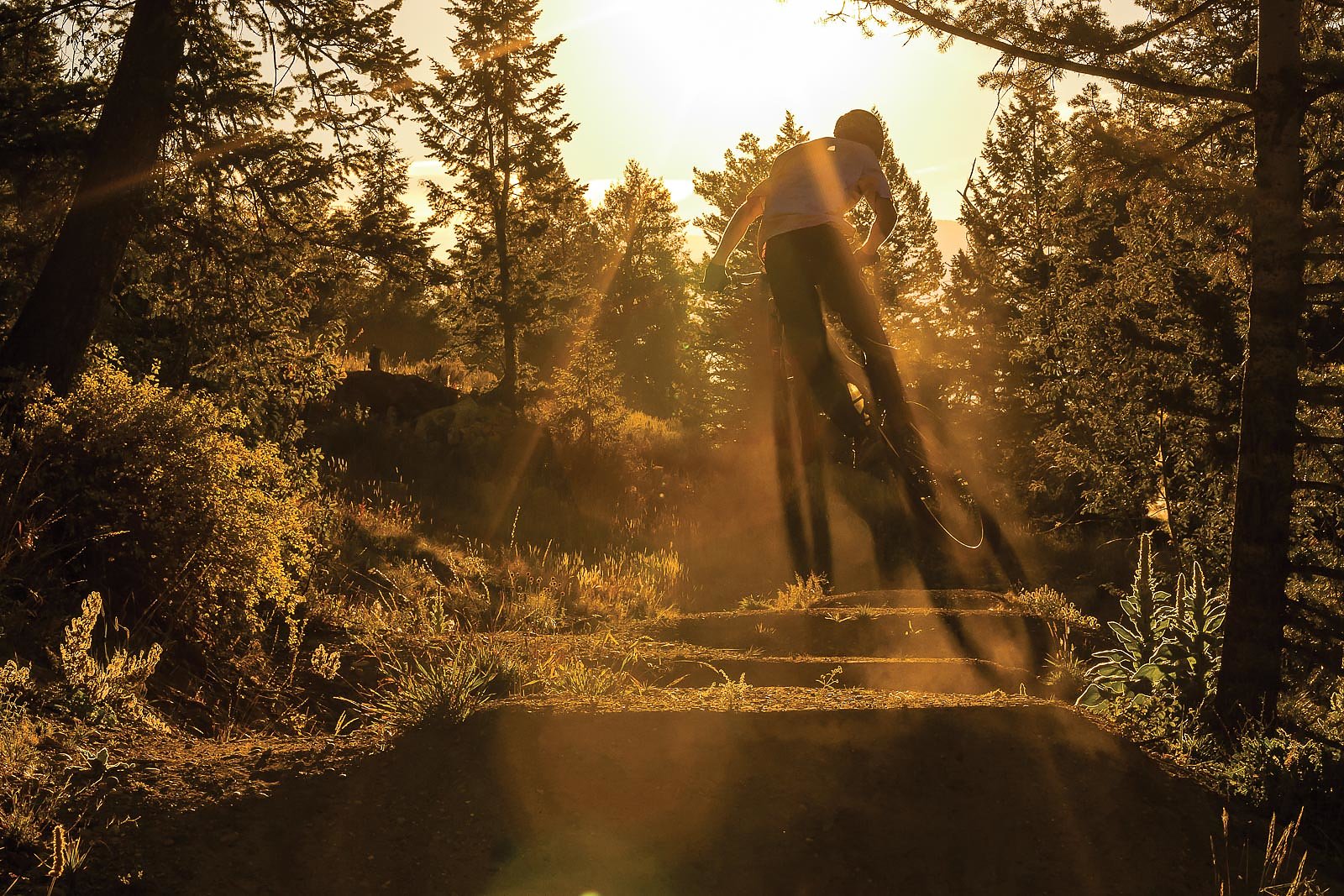
Nearly 20 years after gravity-hungry bikers began hacking out their illegal rides in the forests flanking Highway 22, trail traffic has increased enormously, though the area remains manageable and relatively uncrowded. Though many trail users may not know the full story behind Teton Pass, they do know things are done a particular way. Those doing it wrong are corrected, and so far the unique, cordial hum of pass operations remains protected by and in the hands of the user groups.
While tense, muscle-freezing technical upper sections of Lithium remain, the bottom now follows a path as clear and carefully constructed as the cheery signage up top. But all of the trail’s 2,500 vertical feet flow wonderfully, whether you hit all the man-made features or— like me—choose ride-arounds mandated by the BTNF for the downhill trails.
The ride ends when I blow past the “Downhill Bike Trail: Do Not Enter” sign marking the exit. It heralds slower speeds and a merger with a multi-use trail, yes, but also a different mindset, one of waves, smiles and respectful yielding to other users. Then it’s back up again, whether I choose to pedal up a Pathways-maintained climbing trail or toss the bike in a shuttle truck. There I’ll join the millions of hot-exhaust vehicles and jangling RVs headed to the summit for a gawk and a pic, unaware of the microcosm of drama, cooperation and success that have unspooled in the dark woods alongside the pavement.
